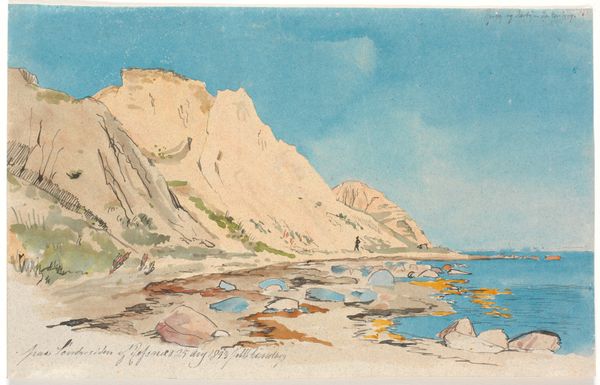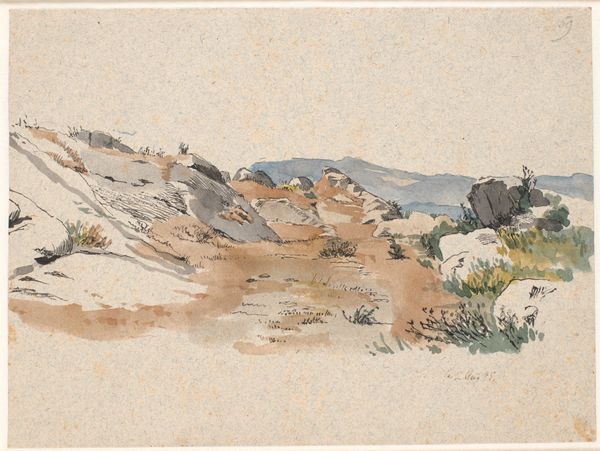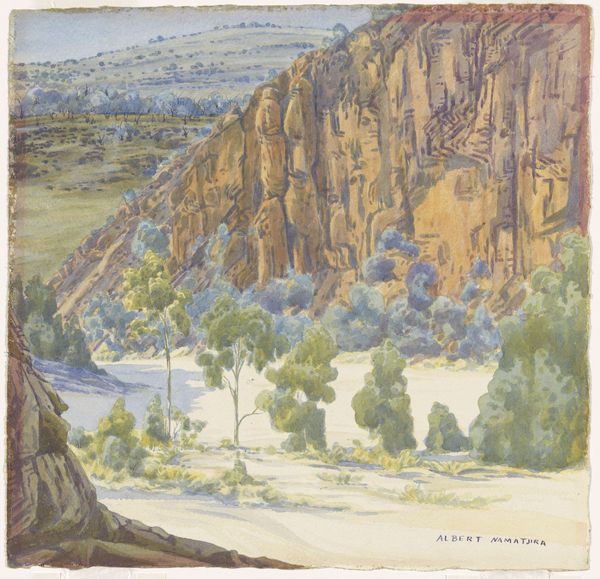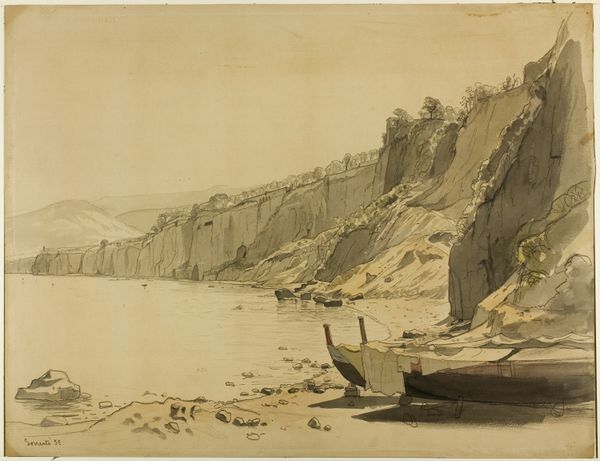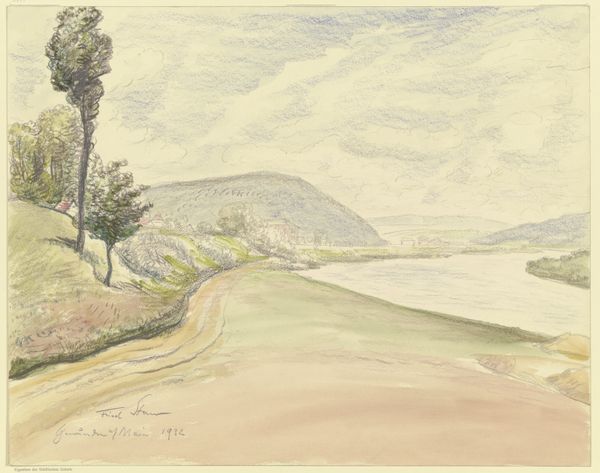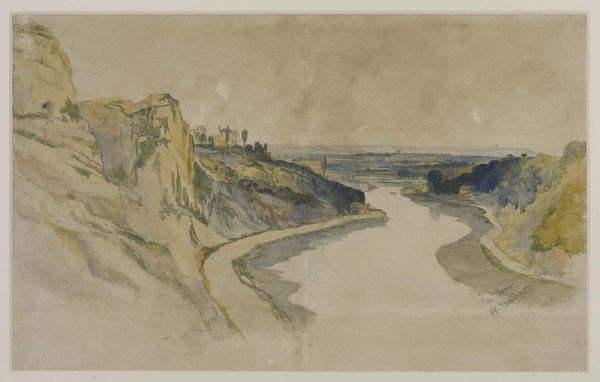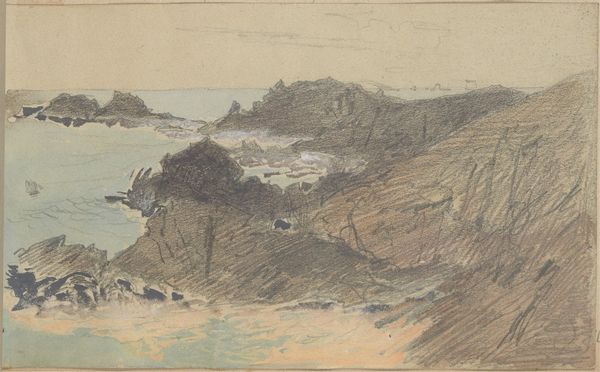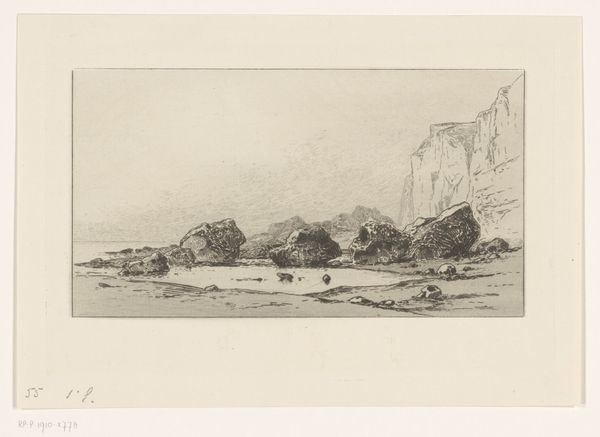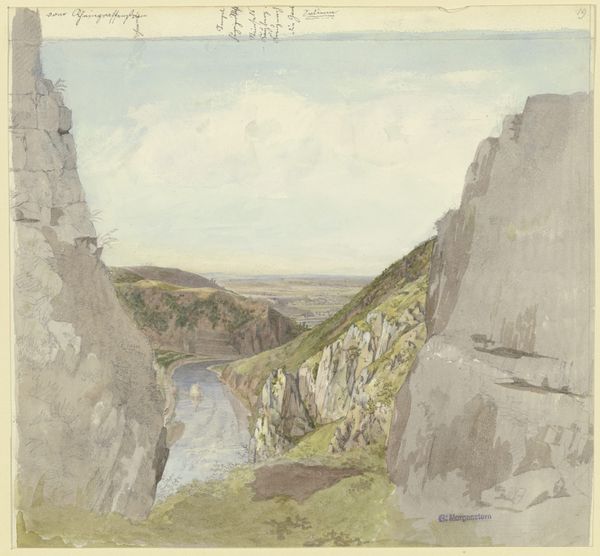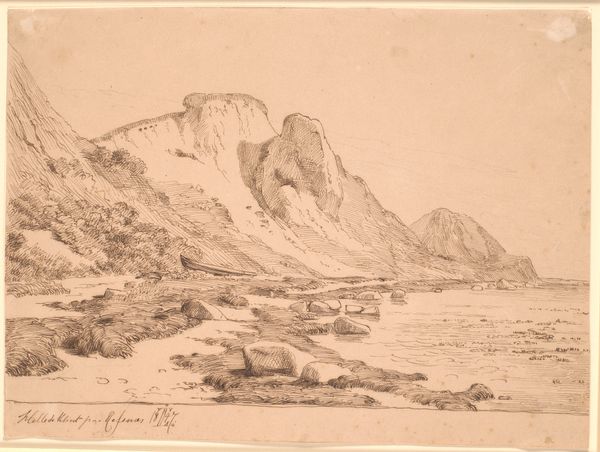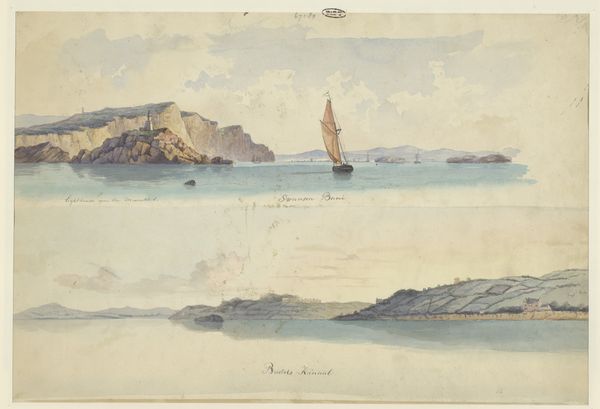
drawing, watercolor
#
drawing
#
landscape
#
watercolor
#
coloured pencil
#
romanticism
#
watercolor
Dimensions: 202 mm (height) x 341 mm (width) (bladmaal)
Editor: So, this is Johan Thomas Lundbye's "Klinten på Refsnæs," a watercolor and drawing from 1843. I find it quite striking, almost monumental, despite its relatively small size. How would you interpret this work? Curator: The cliff itself takes on a mythic presence. Notice how Lundbye uses light and shadow, creating strong vertical lines which are suggestive of a Gothic cathedral reaching for the heavens. Consider that this was made during the Danish Golden Age of painting, a period defined by explorations of national identity. The cliffs could symbolize the enduring strength and resilience of the Danish landscape. What feelings does the imagery evoke in you? Editor: Definitely a sense of timelessness, and maybe even isolation. The lone cliff standing against the sea… Curator: Precisely. But it's more than just isolation; it’s a potent symbol of connection to a specific place and past. Water imagery is profound; have you considered the importance of the sea as a signifier? Editor: I hadn't thought about the sea specifically... as a force of change perhaps? Curator: The sea represents both constant change and the enduring flow of history and tradition. Lundbye may suggest our relationship to our ancestral lands. Are we not a product of both the land and the water that surrounds us? In essence, do you consider landscape in terms of nation-building? Editor: That gives me a lot to consider; I see that it's less of a landscape "painting," and more of a painting "about" landscape. Curator: Indeed. Through close examination of visual symbols like this we gain access to shared cultural memories.
Comments
No comments
Be the first to comment and join the conversation on the ultimate creative platform.
